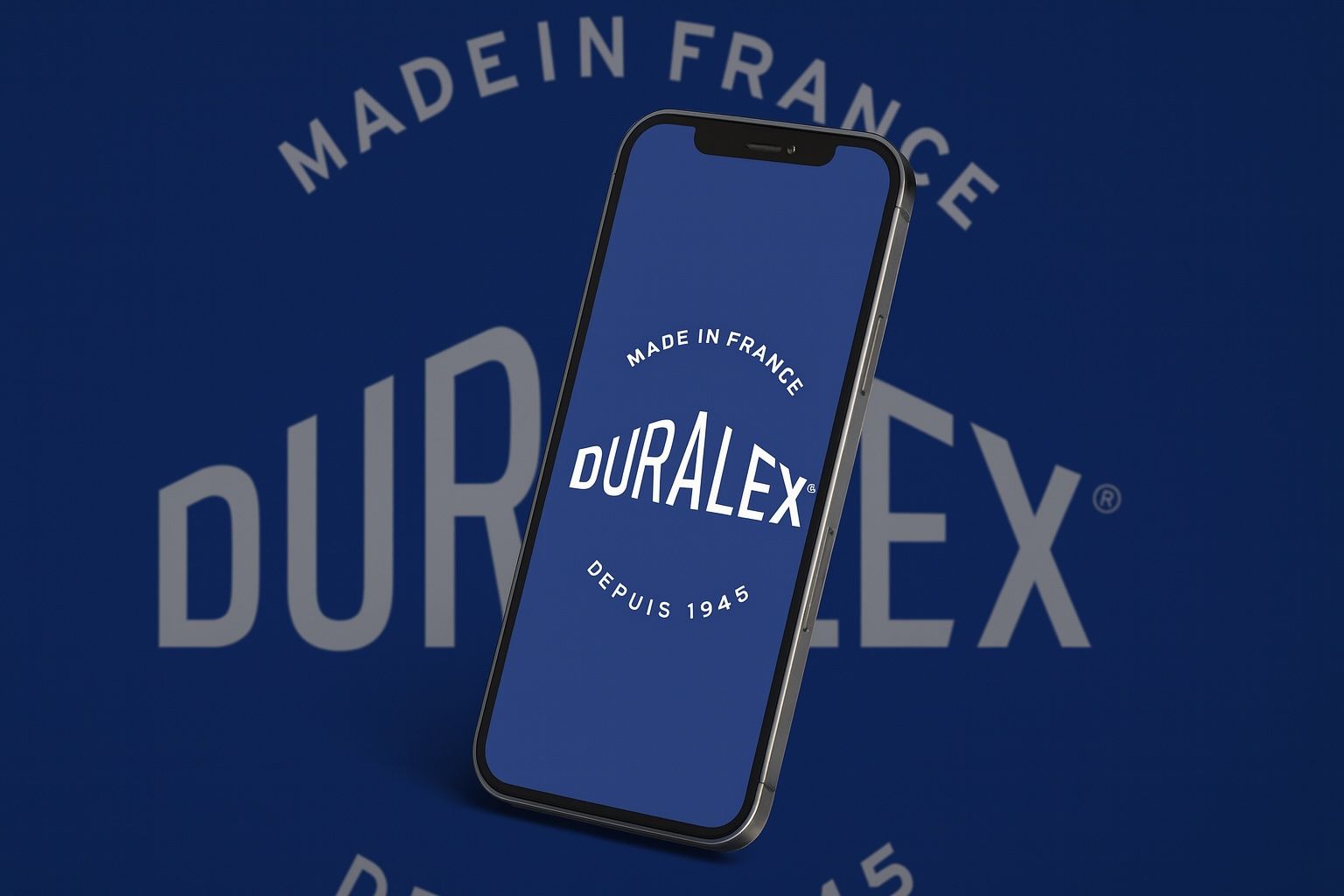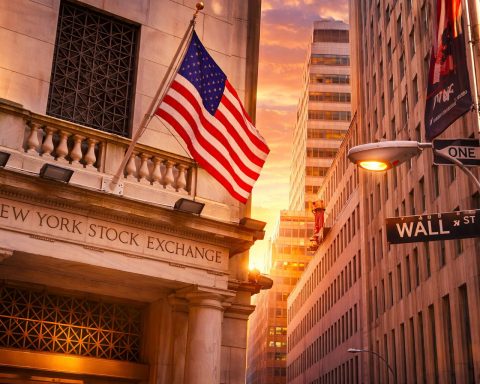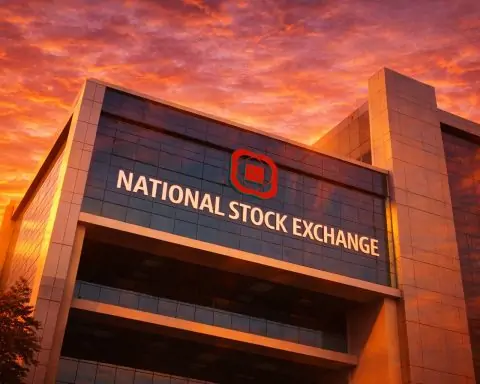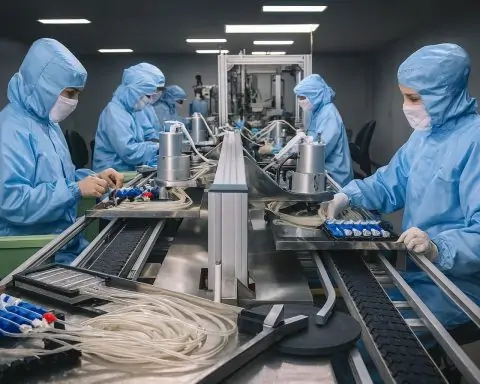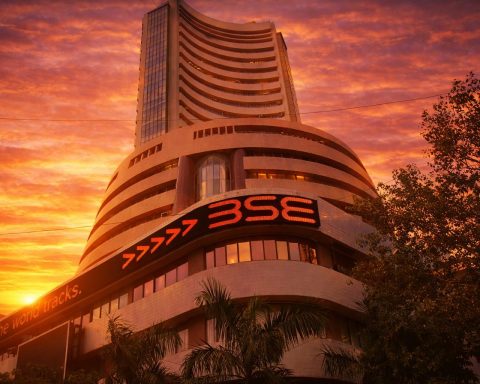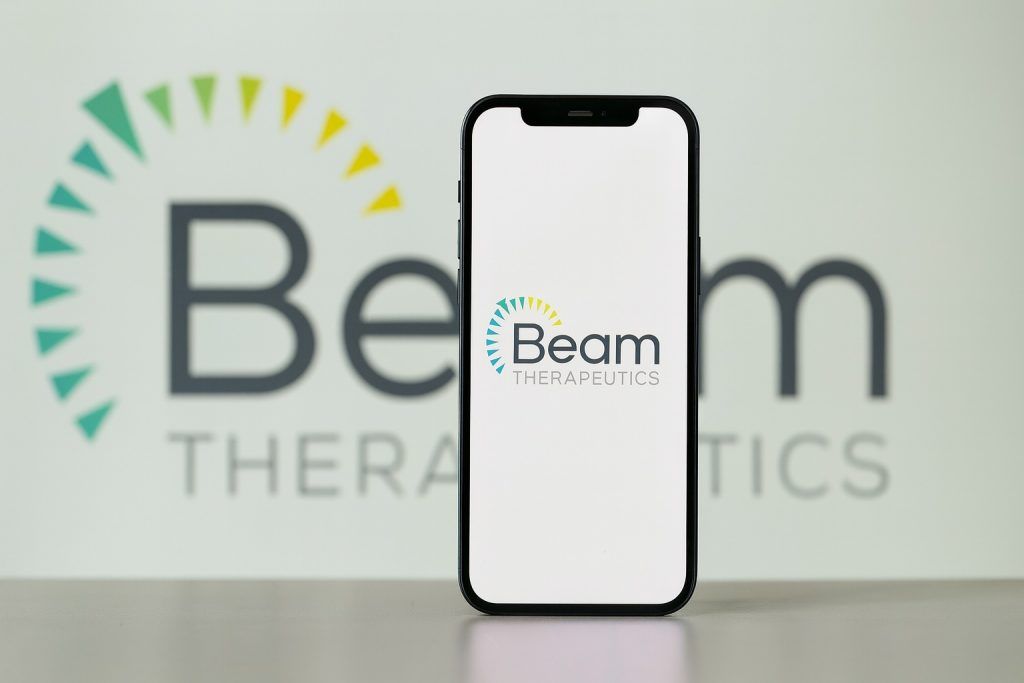- Worker-Owned Icon in Peril: Duralex – the famed 70-year-old French glassware brand – was rescued by its employees in 2024, becoming a worker cooperative (SCOP) to avert collapse [1]. One year on, Director General François Marciano warns “Duralex is not yet saved”, as the company remains financially fragile [2].
- Sales Short of Break-Even: The glassmaker expects about €30 million revenue this year, short of the €35–36 million needed to break even [3]. Marciano says Duralex must “pass the €35M mark to be at equilibrium”, underscoring that 2025 sales will fall below that bar [4]. Despite a +20% sales jump under cooperative management [5], the firm is still operating at a loss.
- €5M Crowdfunding Campaign: To fund its turnaround, Duralex is inviting the French public to invest. Starting November 2, anyone can buy shares via crowdfunding platform Lita with as little as €100. The investment offers an 8% annual return, a 7-year lock-in, and 18% income tax deduction [6] [7]. The goal is to raise €5 million in fresh capital.
- Purpose: New Products & Modernization: The €5M infusion will finance new product lines and factory upgrades. Duralex plans a new production line with condiment maker Martin-Pouret to sell mustard in Duralex glass jars by 2027 [8]. Funds will also go toward “greening” the factory and developing new merchandise (the co-op just launched Duralex kitchen utensils, aprons, and even a special edition glassware set for the Élysée Palace) [9].
- Energy Crisis & Inflation Fallout: Duralex’s woes were amplified by the 2022–2023 energy crisis and high inflation. Skyrocketing gas prices (amid the war in Ukraine) and slumping consumer spending battered the company, forcing a furnace shutdown and pushing it to the brink in 2024 [10]. All 228 jobs were saved in extremis through the employee buyout [11], but six insolvencies in recent decades have left lenders wary [12]. Marciano notes banks “won’t follow us until we prove ourselves” – the co-op must “show a clean sheet” with solid results by April 2026 to regain creditor trust [13] [14].
- Workers’ Resolve & Cost-Cutting: Under the SCOP structure, Duralex employees have embraced austere measures to keep the firm afloat. “The employees are not looking to get rich, they want to save their company,” Marciano says [15]. For example, staff took turns running a new Duralex retail store in Orléans to avoid new hires [16] [17]. This collective sacrifice is helping channel resources into critical investments rather than payroll expansion.
- Outlook – Cautious Optimism: Management aims for €33–34M revenue in 2025 and to restore profitability by 2026–27 [18] [19]. Marciano is bullish that the co-op can return to profit “within 2 years”, sooner than initially forecast [20]. Industry experts call Duralex’s turnaround plan “inspiring but demanding.” The company needs to “reassure financial partners with concrete results” and “mobilize citizen savings” to modernize its aging plant [21]. If successful, Duralex could evolve from merely an iconic heritage brand into “a case study of a successful cooperative revival,” analysts note [22]. However, significant execution risks remain in a competitive market.
- Broader Market Context: France’s stock market has rebounded in 2025 – the CAC 40 index recently neared record highs on easing inflation and a tech rally [23]. Yet Duralex’s struggle highlights the real-economy challenges behind the market indices. Many energy-intensive manufacturers are still clawing back from last year’s price shocks and weak consumption. The hope is that easing energy costs and revived consumer demand will bolster Duralex’s sales, complementing the €5M public investment. The next few months will be critical to see if this French glass legend can solidify its comeback and regain its shine.
Duralex’s Fight for Survival – From Bankruptcy to Worker Cooperative
Founded in 1945, Duralex is a household name in France, known worldwide for its nearly indestructible tempered glass cups and plates. The company is considered part of France’s industrial patrimoine – a storied legacy spanning roughly 70 years of glassmaking [24]. But that proud history has been marred by repeated crises. Over the past three decades, Duralex has endured multiple bankruptcies and rescues, as successive owners failed to modernize its factory in La Chapelle-Saint-Mesmin (Loiret). By 2020, amid mounting debt, Duralex entered court-administered reorganization, and a new investor (La Maison Française du Verre) took over in 2021 [25].
That revival effort quickly soured. In late 2022, Europe’s energy crisis – exacerbated by Russia’s invasion of Ukraine – caused natural gas prices to explode, forcing Duralex to pause its furnace for months to cut costs [26]. The company survived by drawing down inventory, but the production halt hit revenues hard. At the same time, high inflation eroded consumer spending on household goods [27], slowing Duralex’s post-COVID recovery. By summer 2024, the company was once again on the verge of liquidation [28].
In a last-ditch effort, François Marciano – a veteran of the glass industry who became Duralex’s CEO in 2020 – rallied employees to propose a bold plan: convert Duralex into a cooperative. The idea was that the workers themselves, backed by local authorities, would take control and run the company more sustainably. In July 2024, the Commercial Court of Orléans approved this unusual bid. Duralex’s 228 employees invested in the business, and the firm officially re-launched as a SCOP (Société Coopérative Ouvrière de Production) in August 2024 [29]. This move kept the iconic glassworks alive – a rare instance of a worker-led buyout in heavy industry [30].
Marciano described the co-op launch as “passionnant” (thrilling) – a chance to prove that “when we want, we can” turn a company around collectively [31]. The initial results have indeed been promising. By mid-2025, sales were up 20% year-on-year [32] as Duralex clawed back orders at home and abroad. “We are re-establishing ourselves in all countries,” Marciano reported in August [33], noting that export markets that Duralex lost during its turmoil are returning. The company even opened a new flagship store in Orléans in late 2024 to sell directly to consumers [34]. All employees became co-op shareholder-members, 60% of whom opted to invest a portion of their pay into the business, according to French media [35]. The cooperative ethos also brought a cultural shift: “Employees no longer seek personal gain; they seek to save their company,” Marciano emphasizes [36]. This unity of purpose has allowed for tough decisions – like not replacing departing staff and having office workers rotate to man the Orléans shop on weekends [37] – to conserve cash.
Yet, despite these green shoots of recovery, Marciano has remained frank about Duralex’s condition: “We haven’t won yet.” In an interview on local radio Ici Orléans this week, he stressed that Duralex remains in a perilous state, still loss-making and in need of additional capital [38]. “The company is not saved yet,” the director warned [39]. The co-op may have stabilized operations and avoided outright closure, but its finances are precarious – a sentiment echoed by auditors who signed off on the 2024 accounts with cautionary notes.
“Not Yet Saved”: Why Duralex Needs a €5 Million Lifeline
The core problem is one of scale and investment. Duralex’s revenues, while growing, are not high enough to cover its fixed costs (especially with energy prices still about double their 2019 levels). Marciano estimates the break-even point is around €35–36 million in annual turnover [40]. “To save Duralex, we must cross that €35M bar that lets us break even,” he said, explaining that current sales are too low [41]. By his projections, 2025 turnover will reach only ~€30 million [42], leaving a significant gap. (An initial target of €34M for this year won’t be met due to slower summer orders, he noted.) The implication is that without an injection of funds to drive growth, Duralex could continue bleeding cash and eventually run out of steam.
Compounding the challenge, Duralex carries the baggage of its past. It has gone through six insolvency proceedings since the 1990s [43]. This track record makes banks skittish. Traditional lenders refuse to extend credit until Duralex can demonstrate a full year of healthy financials. “As long as we haven’t produced an annual balance sheet, no one will back us – which is understandable after six bankruptcies,” Marciano told BFM Business [44]. “You can’t just ask bankers ‘come on, lend us money’ – we have to show patte blanche (a clean bill of health).” The team hopes April 2026 (when 2025 results are released) will be that credibility turning point [45], but until then, outside financing is essentially frozen.
Yet time is of the essence. Duralex’s furnace and equipment are outdated and energy-hungry – a liability in a world of high utility costs and carbon reduction goals. The new cooperative cannot afford to wait two years with crossed fingers. According to Marciano, Duralex needs to invest €17 million over the next 3 years to modernize and reach profitability [46]. That includes upgrading production lines, improving energy efficiency (potentially shifting from gas to electric furnaces), and developing innovative products to win back market share [47]. Without these investments, Duralex risks stagnation and falling further behind global rivals.
This is why the company has turned directly to the public for help. Duralex is launching a crowdfunding campaign – essentially a mini-bond issuance open to individual investors – to raise part of the needed funds immediately. “We’re opening a cagnotte (fundraiser) on the Lita platform,” Marciano announced on October 20 [48]. “All French people can take shares; the minimum entry is €100” [49]. The instrument is structured to be attractive: investors will receive 8% interest per year, with a 7-year maturity (meaning funds are locked until 2032) [50]. Additionally, because this investment supports a qualifying industrial revival, French taxpayers who participate get an 18% income tax credit on the amount invested [51]. These terms – 8% annual yield plus tax perks – are quite generous in today’s low-rate environment, reflecting the fact that this is patient capital committed for the long haul. The campaign’s target is €5 million [52], which if achieved would cover roughly 30% of the total €17M investment plan. The offer officially opens November 2, 2025, on Lita.co (a crowdfunding site specializing in social and sustainable enterprises) [53].
Marciano is essentially appealing to French pride and solidarity to save a national treasure. In the radio interview, he positioned the investment as a chance for ordinary citizens to “own a piece of Duralex” and participate in its recovery [54]. The co-op structure means no single shareholder can dominate – each employee has one vote, and external investors will be passive supporters rather than owners calling the shots. For many French people who grew up sipping orange juice from Duralex Picardie tumblers in school cafeterias, the brand carries nostalgia. The hope is that thousands will step up with small investments, not only for financial return but to be part of preserving a cultural icon. “It’s about showing that our heritage brands can have a future with community support,” a local official in Orléans said, backing the campaign. Early feedback suggests interest from the public is high, especially given the favorable 8% rate at a time when bank savings accounts yield barely 2%.
Of course, investors must also weigh the risks. This is essentially a form of corporate bond – and one issued by a company that nearly went under last year. If Duralex fails to hit its turnaround targets, investors could lose some or all of their money. Marciano has been transparent about the stakes: “It’s blocked for 7 years” – meaning you can’t withdraw early – “and there have been six bankruptcies” in Duralex’s past [55]. In other words, this is not a sure bet, but rather a patriotic gamble on a manufacturing underdog. To succeed, Duralex must execute on its business plan and generate enough profit to repay these new creditors by 2032, along with interest.
New Products, Partnerships Aim to Revive Growth
What gives Marciano confidence that Duralex can pull it off? For one, the company is finally pivoting from simply selling the same old glassware lines to innovating with partners and expanding its product range. Under previous owners, Duralex suffered from a “30-year drought of new products”, Marciano has lamented [56]. There was little marketing, no diversification – the brand coasted on its mid-20th-century reputation while competitors innovated. The co-op is determined to change that.
A centerpiece of the revival is the Martin-Pouret partnership. Martin-Pouret is a historic vinegar and mustard maker from Orléans (est. 1797), known for its artisan vinegar. Duralex and Martin-Pouret have struck a deal to produce a line of mustards packaged in Duralex glass jars [57]. Starting in 2027, grocery shelves will carry premium Martin-Pouret mustard in reusable Duralex containers – a marriage of two local heritage brands. This co-branding not only opens a new sales channel (food packaging) for Duralex, but also taps into the sustainability trend of glass over plastic. The new dedicated production line for these jars will be funded by part of the €5M crowdfunding [58]. It’s a clever way to keep Duralex’s furnaces busy with a stable, contracted demand (mustard jars) alongside its traditional tableware business that fluctuates with consumer whims.
Duralex is also leveraging its Made in France cachet through a collaboration with the Élysée Palace. The company will release a special edition glassware set branded with the Élysée (the French President’s official residence) [59]. Such “prestige” partnerships can generate buzz and attract buyers interested in French craftsmanship. Another project in the works is with chocolatier Sébastien Papion [60] – presumably creating elegant glass containers or gift sets for high-end chocolates. By aligning with gourmet and luxury names, Duralex is aiming upmarket, where margins are better.
On the consumer front, Duralex’s Orléans store has become a testing ground for new merchandise. The co-op introduced Duralex-branded kitchen accessories like aprons, cutting boards, and utensil sets [61]. These items complement the glassware and cater to fans of the brand’s retro appeal. The store’s surprising success – it drew enthusiasts from as far as Paris in its first months – indicates that the Duralex name still carries weight. The company is now exploring e-commerce options to sell these products beyond the region, and eyeing pop-up shops in Paris during the winter holidays.
Internationally, Duralex is working to win back export distributors. In its heyday, Duralex exported to 100+ countries, and its glass tumblers became design icons (even featured in MoMA’s collection). But years of instability meant losing shelf space to rivals like US-based Libbey or Italy’s Bormioli. Since the co-op takeover, Marciano says Duralex has reactivated contacts in Europe, the Middle East, and Asia [62]. The company recently shipped its first large order to India in years, and is negotiating to supply restaurant chains in the Gulf states. The global demand for durable, recyclable glassware remains strong, especially as restaurants ditch plastic cups. If Duralex can reliably meet orders, buyers seem willing to return.
However, fulfilling big orders will require ramping up production, which loops back to the need for working capital. The factory currently runs only one furnace (out of two), operating at around 60% capacity. Marciano’s medium-term plan is to refurbish and restart the second furnace by 2027, effectively doubling output – but that hinges on securing funds and proving demand exists. The €5M raise and subsequent performance in 2026–2027 will determine if that expansion happens.
Cooperative Turnaround – An Expert View
Duralex’s experiment as a worker-led enterprise is being watched closely in French industry circles. Can a venerable manufacturing firm, once mismanaged by profit-driven owners, find success under employee ownership? Early signs suggest the co-op model has boosted morale and brought cost discipline. “The Duralex case is an inspiring example of industrial relaunch by the employees themselves,” notes business analyst Vanessa Vallée [63]. She points out that cooperatives, by design, reinvest earnings rather than paying dividends to outside shareholders, which could bode well for sustaining Duralex’s recovery. Moreover, employees have skin in the game and are highly motivated to see their company thrive – evident in Duralex workers’ willingness to make personal sacrifices.
But Vallée also cautions that the SCOP path is not easy. “It imposes austere management and rare collective effort,” she writes, noting that few heavy-industry firms have tried it [64]. For Duralex, she identifies a triple challenge ahead: “reassure financial partners with concrete results, mobilize citizen savings as a novel but uncertain lever, and transform a historic factory into a 21st-century green industrial model.” [65] In other words, success requires hitting financial targets to regain trust, successfully crowd-financing the interim, and using that money to modernize operations for long-term viability. Achieving any two of those would be hard; Duralex must manage all three simultaneously.
If it works, the payoff is not just the survival of an iconic brand, but a blueprint for others. As Vallée puts it, Duralex could become “not just an iconic Made-in-France name, but a case study in successful cooperative revival.” [66] There’s precedent in France for worker buyouts saving smaller companies (e.g. several textile and toy factories were saved by employees in recent years), but none as large as Duralex in its sector. A Duralex rebound would send a strong message that industrial jobs and know-how can be preserved through shared ownership, even in tough global markets.
For now, all eyes are on the crowdfunding campaign and the months ahead. The French government, which provided an energy subsidy to Duralex during the gas crisis, is supportive but has signaled no further bailouts – “the ball is in the company’s court to prove its model,” said the Industry Minister recently. Encouragingly, France’s macroeconomic backdrop is improving: inflation has fallen to ~1% and energy costs are off their peaks [67], which should relieve some pressure on Duralex’s costs and consumers’ wallets. The Paris stock market has rallied ~10% this year on optimism that the worst of the inflation shock is over [68]. But while stock indices soar, on the factory floor in Orléans it’s all about grinding out efficiencies and rebuilding customer trust one order at a time.
Marciano remains realistic but upbeat. If the €5M fundraising succeeds and Duralex hits its €33M sales goal next year, the company will be on a path to break-even, and banks may reopen credit lines. The plan then would be to invest in a new electric furnace by 2027, which could cut energy usage by 30% and further boost margins. By 2028, Duralex aims to be profitable and even start paying modest dividends to its worker-owners – a far cry from the chaos of 2024. “It’s a long road, but we have a roadmap,” Marciano told Ouest-France. “Duralex has come back from the edge, and with everyone’s help – employees, customers, and now the public – we’re determined to make it shine again.”
Sources:
- BFM Business – “Pas encore sauvée”: Duralex’s director appeals for public investment [69] [70]
- Ouest-France – Worker cooperative Duralex to offer shares to the public to raise €5M [71] [72]
- CreditNews – Duralex: €17M needed, crowdfunding €5M via bonds in Oct [73] [74]
- Décideurs Magazine – Interview with François Marciano (Duralex CEO) [75] [76]
- TechStock² News – CAC 40 nears record high as inflation eases in 2025 [77]
- France Bleu Orléans (Ici Orléans) – Morning interview with F. Marciano, Oct 20, 2025 [78] (French)
- BFM Business (Aug 4, 2025) – One year after SCOP launch, Duralex on track but €17M investment needed [79] [80]
References
1. www.bfmtv.com, 2. www.bfmtv.com, 3. www.bfmtv.com, 4. www.bfmtv.com, 5. www.bfmtv.com, 6. www.bfmtv.com, 7. angers.maville.com, 8. www.bfmtv.com, 9. angers.maville.com, 10. angers.maville.com, 11. angers.maville.com, 12. www.creditnews.fr, 13. www.bfmtv.com, 14. www.creditnews.fr, 15. www.creditnews.fr, 16. www.bfmtv.com, 17. www.creditnews.fr, 18. www.creditnews.fr, 19. www.decideurs-cf.com, 20. www.decideurs-cf.com, 21. www.creditnews.fr, 22. www.creditnews.fr, 23. ts2.tech, 24. www.bfmtv.com, 25. www.decideurs-cf.com, 26. angers.maville.com, 27. angers.maville.com, 28. www.bfmtv.com, 29. www.bfmtv.com, 30. www.creditnews.fr, 31. www.bfmtv.com, 32. www.bfmtv.com, 33. www.bfmtv.com, 34. www.bfmtv.com, 35. mediatico.fr, 36. www.creditnews.fr, 37. www.bfmtv.com, 38. www.bfmtv.com, 39. www.bfmtv.com, 40. www.bfmtv.com, 41. www.bfmtv.com, 42. www.bfmtv.com, 43. www.creditnews.fr, 44. www.bfmtv.com, 45. www.bfmtv.com, 46. www.creditnews.fr, 47. www.creditnews.fr, 48. www.bfmtv.com, 49. www.bfmtv.com, 50. www.bfmtv.com, 51. www.bfmtv.com, 52. www.bfmtv.com, 53. angers.maville.com, 54. www.bfmtv.com, 55. www.bfmtv.com, 56. www.decideurs-cf.com, 57. www.bfmtv.com, 58. www.bfmtv.com, 59. angers.maville.com, 60. angers.maville.com, 61. angers.maville.com, 62. www.bfmtv.com, 63. www.creditnews.fr, 64. www.creditnews.fr, 65. www.creditnews.fr, 66. www.creditnews.fr, 67. ts2.tech, 68. ts2.tech, 69. www.bfmtv.com, 70. www.bfmtv.com, 71. angers.maville.com, 72. angers.maville.com, 73. www.creditnews.fr, 74. www.creditnews.fr, 75. www.decideurs-cf.com, 76. www.decideurs-cf.com, 77. ts2.tech, 78. www.bfmtv.com, 79. www.bfmtv.com, 80. www.bfmtv.com
